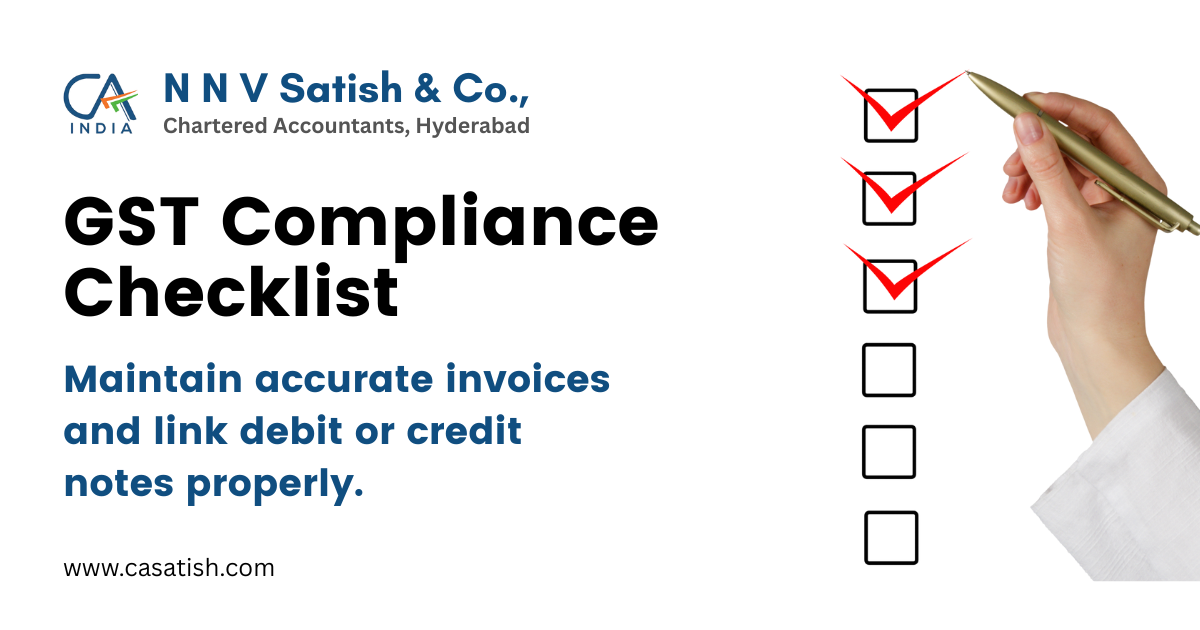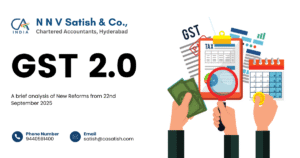Staying compliant with the Goods and Services Tax (GST) system is essential for every business in India. A wellstructured GST compliance checklist helps businesses avoid penalties, maintain credibility, and ensure smooth operations. Whether you are a startup, small business, or large enterprise, this guide will walk you through the most important aspects of GST compliance.
Why is GST Compliance Important?
The Indian GST system is dynamic, with frequent updates from the GST Council. Noncompliance can result in:
(a) Penalties and late fees
(b) Blocking of Input Tax Credit (ITC)
(c) Legal notices or departmental scrutiny
(d) Cash flow disruptions
By following a GST compliance checklist, businesses can stay ahead of deadlines, claim eligible credits, and build financial discipline.
GST Compliance Checklist for 2025
Here’s a stepbystep GST compliance checklist every business should follow:
1. GST Registration
(a) Apply for GST registration if turnover crosses the threshold.
(b) Keep your GSTIN updated on invoices and business communications.
(c) Update any changes in address, business type, or additional places of business.
2. Proper Invoicing
(a) Issue GST compliant invoices with mandatory details like GSTIN, HSN/SAC codes, and tax rates.
(b) Keep proper records of debit and credit notes, ensuring they are connected to the corresponding original invoices.
(c) Use einvoicing if your turnover exceeds the prescribed limit.
3. Input Tax Credit (ITC)
(a) Claim ITC only on eligible purchases.
(b) Match ITC with GSTR2B regularly to avoid mismatches.
(c) Reverse input tax credit in cases of exempt supplies or when supplier payments are delayed.
4. Filing GST Returns
(a) File GSTR1 for outward supplies (monthly/quarterly).
(b) File GSTR3B for tax payment and liability.
(c) File annual returns (GSTR9) and reconciliation statement (GSTR9C if applicable).
(d) Never miss deadlines to avoid late fees and interest.
5. Tax Payments & Deadlines
(a) Pay GST liability on time using challan PMT06.
(b) Track deadlines for QRMP scheme if filing quarterly.
(c) Reconcile monthly and quarterly tax data.
6. EWay Bills & EInvoicing
(a) Generate eway bills for goods worth more than the threshold limit.
(b) Modify e-way bills whenever there is a change of vehicle.
(c) Comply with einvoicing rules by generating IRNs through the GST portal.
7. RecordKeeping
(a) Maintain books of accounts, returns, and supporting documents for at least six years.
(b) Keep an audit trail for GST verification.
(c) Ensure HSN/SAC classification is correct.
Best Practices for GST Compliance
(a) Conduct periodic internal GST audits.
(b) Use accounting software to automate GST filings.
(c) Stay updated with the latest GST notifications and Council decisions.
(d) Take professional assistance from a GST consultant or Virtual CFO service provider.
Conclusion
A GST compliance checklist is not just about filing returns; it ensures longterm financial discipline and peace of mind. By following the right process, businesses can reduce risks, claim rightful credits, and focus on growth.
At N N V Satish & Co., we provide endtoend GST services — from registration to return filing, ITC reconciliation, and compliance audits. Our goal is to simplify GST compliance so you can run your business worryfree.




